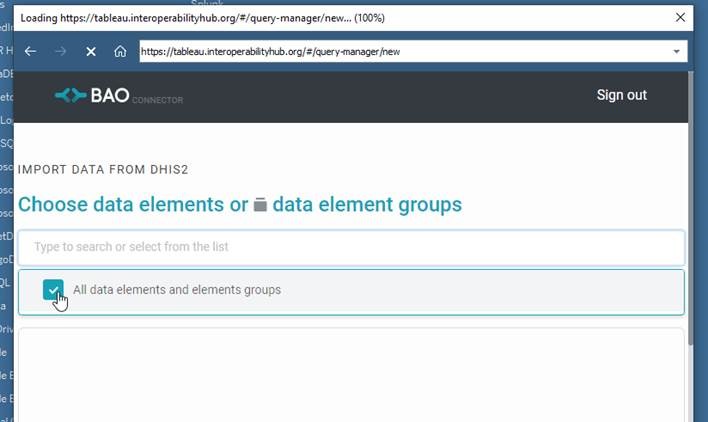Through funding, in part from @DigitalSquare, @BAO_Systems is releasing a suite of DHIS2 tools which are now available through the App Store.
BIF
The BAO Import Foundry (BIF) is a user-friendly configuration tool used to quickly and easily create metadata objects in DHIS2 in bulk upload form. Using a standard format csv file uploaded via BIF by the user, the metadata objects are then created in DHIS2 saving you time bypassing complex API configuration or directly using the DHIS2 interface. BIF is made up of a series of modules, each designed to create specific metadata objects in DHIS2 form. The tool allows you to create all of your metadata objects (which may be in the hundreds) in one shot.
Currently, BIF contains the following modules:
- Organisation Units
- Category Power Loader
- Data Element Loader
- Indicator Loader
- Power Group Loader
- Dataset Loader
- Program Loader
- Translations
- Sharing
- Style Loader
- UID Generator
There is a partner app to BIF, called dAtaZ, which is capable of handling the bulk import of aggregate, events and tracker data in DHIS2, through a standardised flat CSV import template. Reach out to a BAO representative if you are interested in learning more about dAtaZ.
KOBO-to-DHIS2 Connector
KoBo Toolbox is a suite of tools for field data collection that can be used in challenging environments. Our Kobo-to-DHIS2 Connectoris a user-friendly tool that pulls data from KoBo into DHIS2 with minimal user interaction, allowing KoBo data to be analyzed with the powerful analytic tools from DHIS2.
The integration driver gets objects from KoBo and transforms them into objects that are intelligible to DHIS2. As a result, the integration process converts the KoBo objects into DHIS2 objects. This includes Programs, option sets, data elements, organization units, and program stages. All data elements are assigned to the appropriate program stage.
During the creation of metadata, KoBo introduces a naming convention by appending “KB” and the relevant code to the metadata ‘Name’ and ‘Short name’ created on DHIS2. Once the metadata has been successfully created on DHIS2, the organization units on KoBo are mapped with the organization units on DHIS2. Thereafter, data from KoBo is integrated with DHIS2 metadata.
During the integration, KoBo allows for the selection of data elements that are to be created on DHIS2. This feature helps to get rid of irrelevant data elements on KoBo.
DHIS2-to-Kobo Connector: User Guide
DHIS2-to-Tableau Connector
Funders are increasingly demanding robust data use for adaptive program management. While a number of global health and development organizations implement DHIS2 to collect, manage, and visualize routine program data, users are increasingly demanding more advanced analytics capabilities beyond the software’s core functionality. In addition, organizations maintain multiple datasets which are housed in other formats such as Excel, Access, ODK/Kobo/ONA, SQL, Sharepoint, Salesforce, and others. As a result, there is growing demand for more robust data analytics platforms that enable data mashups from the variety of sources where data are stored as well as more advanced visualization features.
One of many popular business intelligence (“BI”) tools used by NGOs working in the global health and development sector is Tableau. The use of Tableau for visualizing DHIS2 data is increasing amongst global health and development NGOs, however, many users require support in efficiently exchanging data between DHIS2 and Tableau.
In order to respond to the needs of data users, thanks to funding from Digital Square, BAO Systems developed the DHIS2-to-Tableau desktop Connector, a user-friendly utility that will enable users to seamlessly:
- Connect to DHIS2 using authorization
- Select data element groups/data elements, organizational units, and time periods
- Establish a data model to maximize flexibility and robust analytics
- Easily interact with DHIS2 data in Tableau desktop
DHIS2-to-Tableau Connector User Manual
Also see: DHIS2 to PowerBI connector is ready! Check out the video, test it, use it and give us feedback!



